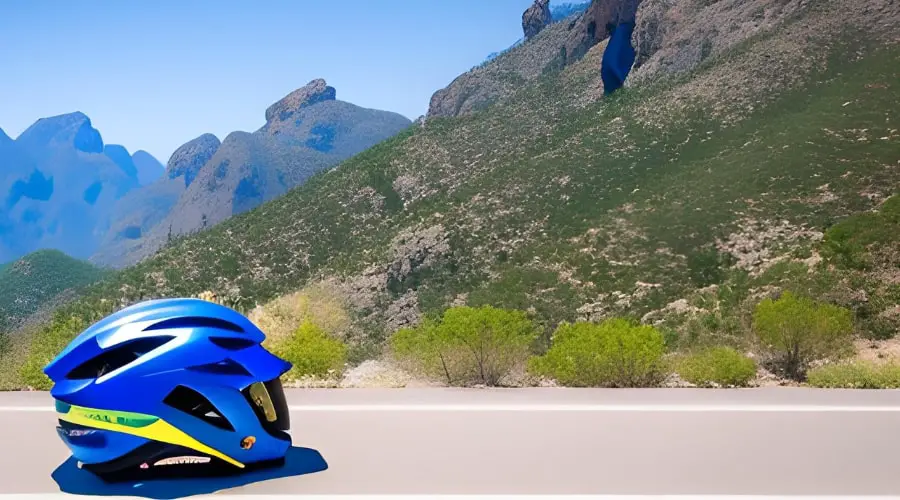Bike helmets are an essential piece of equipment for cyclists, as they provide crucial head protection in case of accidents. But with so many options available, how do you choose a safe bike helmet? In this article, we’ll guide you through the process, covering everything from understanding safety standards to selecting the right size and features.

Why is a Safe Bike Helmet Important?
Wearing a bike helmet significantly reduces the risk of head injuries, which can lead to long-lasting or even fatal consequences. Helmets work by absorbing and distributing the force of an impact, helping to protect the brain and skull. By choosing a safe helmet, you’re investing in your safety and peace of mind.
Understanding Safety Standards and Certifications
There are several safety certifications that bike helmets must meet. Here’s a brief overview of the most common ones:
- 3.1. CPSC Certification: The Consumer Product Safety Commission (CPSC) sets the minimum safety standards for bike helmets sold in the United States. Look for a CPSC sticker inside the helmet.
- 3.2. ASTM Certification: The American Society for Testing and Materials (ASTM) provides additional safety standards for helmets, including those designed for specific cycling disciplines like mountain biking.
- 3.3. Snell Certification: The Snell Memorial Foundation offers a more rigorous set of safety standards. Helmets that meet Snell certification undergo more stringent testing and are considered top-of-the-line in terms of safety.
- 3.4. CE Certification: The European Union has its own safety standards, represented by the CE mark. Helmets sold in Europe must meet these requirements.
Bike Helmet Types
Different types of bike helmets cater to the needs of specific cycling disciplines. Here’s a breakdown of the most common categories:
- 4.1. Road Bike Helmets: These helmets are lightweight, well-ventilated, and aerodynamic, making them ideal for road cycling and racing.
- 4.2. Mountain Bike Helmets: Designed for off-road riding, mountain bike helmets offer more coverage around the back of the head for added protection. They often come with a visor to shield the eyes from debris.
- 4.3. Commuter Bike Helmets: These helmets prioritize comfort and style for everyday use, often featuring a more casual design and additional features like integrated lights or reflective materials.
Helmet Sizing and Fit
A well-fitting helmet is crucial for optimal protection. Here’s how to ensure your helmet fits correctly:
- 5.1. Measuring Your Head: Use a flexible measuring tape to measure the circumference of your head just above your eyebrows. This measurement will help you determine your helmet size.
- 5.2. Adjusting the Fit: Once you’ve found the right size, adjust the helmet’s retention system to secure it comfortably on your head. There should be minimal movement when you shake your head, and the front edge of the helmet should sit just above your eyebrows.
Helmet Features to Look For
Here are some key features to consider when choosing a bike helmet:
- 6.1. Ventilation: Adequate ventilation helps keep your head cool and comfortable during rides. Look for a helmet with plenty of vents to promote airflow.
- 6.2. Retention System: A good retention system will allow you to easily adjust the helmet’s fit. Most helmets feature a dial or strap system for this purpose.
- 6.3. Padding: Removable and washable padding can make your helmet more comfortable and hygienic.
- 6.4. Visor: A visor can help shield your eyes from sun, rain, and debris. Some helmets come with a detachable visor for versatility.

Helmet Lifespan and Replacement
Bike helmets have a limited lifespan, typically around 3-5 years. Over time, the materials can degrade, reducing their effectiveness. It’s important to replace your helmet after a significant impact or when it shows signs of wear and tear. Regularly inspect your helmet for any cracks, dents, or compromised straps.
Related: How Do I Choose a Full-Face Helmet?
Frequently Asked Questions:
Q: How do I know if my helmet is still safe to use?
A: Regularly inspect your helmet for any signs of damage, such as cracks, dents, or compromised straps. Replace it if you notice any issues or after a significant impact.
Q: Can I use a multi-sport helmet for cycling?
A: It’s best to use a cycling-specific helmet, as they’re designed to meet the unique safety requirements and demands of the sport.
Q: How tight should my helmet be?
A: Your helmet should fit snugly without causing discomfort. There should be minimal movement when you shake your head, and the front edge should sit just above your eyebrows.
Q: What should I do if I’m between helmet sizes?
A: If you’re between sizes, opt for the smaller size and adjust the retention system for a secure fit. A well-fitting helmet is crucial for optimal protection.
Q: Can I wear a hat or headband under my helmet?
A: It’s best to avoid wearing anything under your helmet that could affect its fit. Instead, look for helmets with built-in sweatbands or consider a skull cap designed specifically for cycling.
Conclusion
Choosing a safe bike helmet involves understanding safety standards, selecting the right type and size, and considering key features. By following the guidelines outlined in this article, you can ensure your helmet provides optimal protection during your rides. Remember to replace your helmet when necessary, and always wear it while cycling.
Helmetslab is a website that focuses on providing in-depth reviews and information about different types of helmets, including motorcycle helmets and others helmets. I am writing a post with proper research on the info that helps helmet users.

